One of the best things about writing is the great people I have met as a result of it. This guest blogger is just such an example. He’s a wealth of information and I’m glad I’ve got access to his brain. My guest blogger is Mr. Travis Perry. (insert applause)
Fighting at night greatly limits what a person can do in a combat situation. It’s awfully challenging to fight hand to hand if you are in any kind of group if you can’t see who are your friends and who are your enemies. And with missile weapons, other than by blind luck, it’s impossible to hit a target you cannot see.
One thing modern people don’t usually realize is how much difference the phases of the moon make. A cloudy night without a visible moon, or a new moon, limits a human being to the point where you can barely see well enough to walk at all, no matter how much time you give your eyes to adjust (star light alone is not enough for a human being to walk around–though it could be in a world with more stars). The more moon there is in the sky, the more likely it is people not using artificial light would be willing to fight. (Medieval Arab armies were well-known for attacking by the light of a full moon, though even they only did this on occasion.)
(By the way, I learned the lesson about the huge difference the moon makes while attending a desert survival course conducted by the French military in Djibouti, Africa, which included night training without night vision–here’s a link with information on that course, though it shows a bit of night action only at the very end. Yes, most of the video is in French but eventually they show some Americans. 🙂 )
Another thing most people don’t realize is it generally takes a full hour in darkness for the human eye to adjust to night as much as it will adjust. And any exposure to any light other than light in a deep red color will mess up that night vision, effectively resetting the time required for full night vision to set in.
Starting about World War I, artificial light dominated the battlefield.
Artificial light in an urban environment via gas or arc lights existed prior to WWI, of course. Note that fighting by artificial light, still a factor in cities in the modern age, gives the advantage to people who know exactly where the street lights cover and where they do not. Robbers infamously lurked around dark zones nearby light in the Victorian Era, which passersby would unawares step into–leaving them blinded, with the lurker in the darkness able to see. And attack.
But a combat zone obviously would not be electrified as a whole or be set up for gas lamps. WWI saw the invention of the artillery flare, a chemical light shot by a big gun high in the air, which would float down on a parachute (some rocket light existed at night before this, but it was not reliable). These are enormously bright and for the minute or so they are in the air, they make the ground underneath them as bright as daylight. (Here’s a YouTube video of them in action.)
Combat under such light came and went in surges. Troops were taught to keep one eye closed as the flares went up so as to preserve at least some night vision when they went dark. With the flares up, troops would surge forward and attack. In the darkness, after the flares burn out, troops would consolidate ground and wait for the next burst of light. Tracer rounds, bullets that light up and glow as they fly across the sky, were another invention of this era and allow you to at least know where your bullets are going at night (even if you can’t tell where the enemy is very well).
 Night vision devices in the future may manage to be in full color via advanced computer simulation and preserve three dimensional vision. But current night vision devices present the world in shades of just one color, usually green. They also tend to flatten out what a person is looking at, which causes almost all sense of three dimensions to be lost. It takes a lot of practice to effectively use night vision goggles well, especially when performing complex actions like flying a helicopter.
Night vision devices in the future may manage to be in full color via advanced computer simulation and preserve three dimensional vision. But current night vision devices present the world in shades of just one color, usually green. They also tend to flatten out what a person is looking at, which causes almost all sense of three dimensions to be lost. It takes a lot of practice to effectively use night vision goggles well, especially when performing complex actions like flying a helicopter.
And the following shows an Apache helicopter using infrared:
Speculative Fiction writers should feel free to experiment with the limitations night brings. Obviously magical spells in fantasy stories could simulate the effects of technology, either by lighting up the night or by enabling those who cannot otherwise see to have clear vision. Other races, either alien or demi-human, may have eyes better adapted to the dark, so they can see at night with no special adjustments. Aliens who could see in radar-wave radiation, or who use sonar (echolocation), perhaps would not even have the same definition of night that we have.
But keep in mind the basic fact that you can’t shoot what you can’t see. And can’t effectively fight if you can’t identify your enemies. 🙂
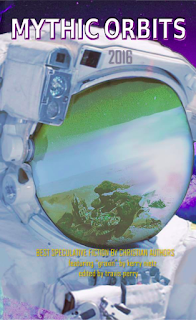 Travis Perry is an Army Reserve officer who served as a medical specialist in Operation Desert Storm, a training adviser/Artillery Officer in Iraq, and a Civil Affairs Officer in Afghanistan and Djibouti, Africa. He has trained by the lights of the moon in Africa and the with the high-tech night vision devices employed by the United States Army.
Travis Perry is an Army Reserve officer who served as a medical specialist in Operation Desert Storm, a training adviser/Artillery Officer in Iraq, and a Civil Affairs Officer in Afghanistan and Djibouti, Africa. He has trained by the lights of the moon in Africa and the with the high-tech night vision devices employed by the United States Army.He writes a wide variety of (mostly) short stories in speculative fiction, including science fiction, fantasy, and horror and is the force behind his small publishing company, Bear Publications, which produces original short story anthologies–most recent, Mythic Orbits 2016. Choose the photo for more information.


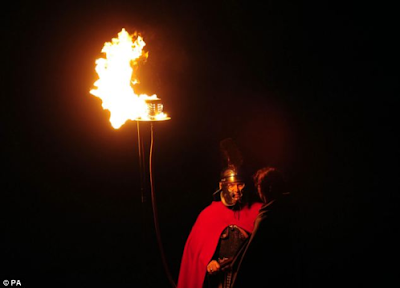
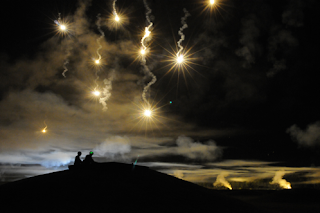



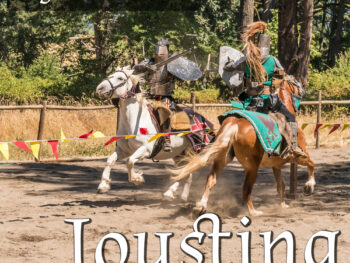

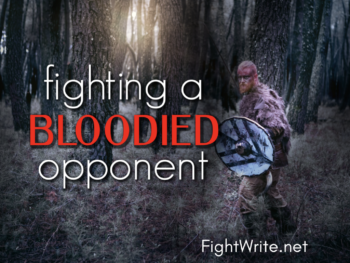

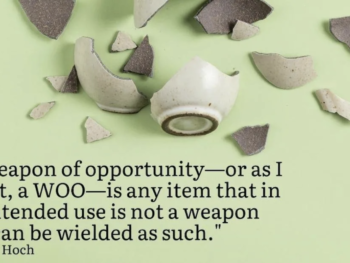
Good article. I hadn't thought about the night flares for my story, but I may need to utilize them. I have an alien species(Elbas) that's got cat-like night vision as well as echolocation, so their favorite tactic is to attack the enemy at night, and preferably in bad weather, then retreat into their tunnels before the enemy can regroup. The enemy doesn't have natural night vision, though their mounts are able to see in the dark. During the day, the enemy has the advantage since they've got a cavalry, as well as having better long range vision and better technology, but the Elbas rule the night.